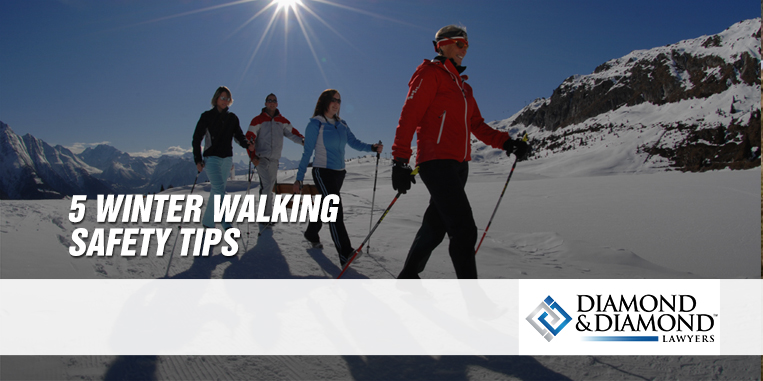Winter weather definitely attributes to an increase in the number of outdoor falls every year. In fact, according to one study, older people fall 20 percent more often after a freezing rain alert. Other winter weather alerts may also signal greater fall risk, particularly for the elderly, as well.
While it is best to stay inside when you know the weather is poor, trapping yourself indoors in severe weather is not always an option. When you have to walk in the snow and ice, it is a good idea to use basic safety tips to help you walk safer in winter weather.
- Walk Like a Penguin
It may seem silly, but penguins do know how to walk well on the snow and ice! Point your feet slightly outward and relax your knees while you walk. Hold your arms out straight at an angle at your sides so that you maintain your balance. Take small, slow steps on flat feet to help maintain control.
- Ensure Walkways Are Properly Maintained (or Be Prepared)
If you are on your own property, you obviously have a lot more control over when you shovel snow or put down salt or sand. You should keep your walkways clear as much as possible for others as well.
In locations where you do not have control over whether it is shoveled or salted, you may want to put some kitty litter in your pocket or a small bag to carry with you. That way, if you end up on aslippery walkway, you can throw some litter down to help you maintain traction while you walk. Sand works as well, but salt should only be used with gloves.
- Walk Through the Snow
Sometimes it is safer to walk through the snow than an icy sidewalk. Snow will often give you better traction than the ice. Move to one side of the path and walk on the snow or grass if you are concerned about slipping on the sidewalk.
- Wear the Right Shoes
Shoes or boots that have natural rubber will do better on icy surfaces. If you can help it, avoid wearing dress shoes or heels in the snow. They do not have the same traction,and they often have less surface to contact with the ground, making walking on slippery surfaces difficult. It is also a good idea to wear a long, heavy coat that will cushion your fall if you lose control.
Ice grippers that you can put on your shoes may be a good idea if you are traveling over hard packed snow or ice. However, you should be careful when you wear these on smooth surfaces, as they can become dangerously slippery under normal conditions.
- Consider Extra Safety Equipment
If you have balance problems or you are especially concerned about balance, it may be a good idea to use ski poles while you walk. A cane or a walker may also be a good idea. Even a simple walking stick can help you stay upright on slippery surfaces.
Slipping on ice might be someone’s fault
The law makes property owners liable for snow and ice left on sidewalks. If you are injured in a fall on a walkway or parking area that was not properly maintained, the personal injury lawyers at Diamond &Diamond have years of experiencing helping accident victims recover compensation for their injuries. Don’t delay, contact our 24/7 injury hotline at 1-800-567-HURT or visit our website to speak to someone now about your claim. Consultations are free, and we have offices located throughout British Columbia.
